解题思路:
字符串 s 是以 $Z$ 字形为顺序存储的字符串,目标是按行打印。
设 numRows 行字符串分别为 $s_1$ , $s_2$ , $\dots$ , $s_n$,则容易发现:按顺序遍历字符串 s 时,每个字符 c 在 N 字形中对应的 行索引 先从 $s_1$ 增大至 $s_n$,再从 $s_n$ 减小至 $s_1$ …… 如此反复。
因此解决方案为:模拟这个行索引的变化,在遍历 s 中把每个字符填到正确的行 res[i] 。
算法流程:
按顺序遍历字符串 s :
res[i] += c: 把每个字符c填入对应行 $s_i$;i += flag: 更新当前字符c对应的行索引;flag = - flag: 在达到 $Z$ 字形转折点时,执行反向。
<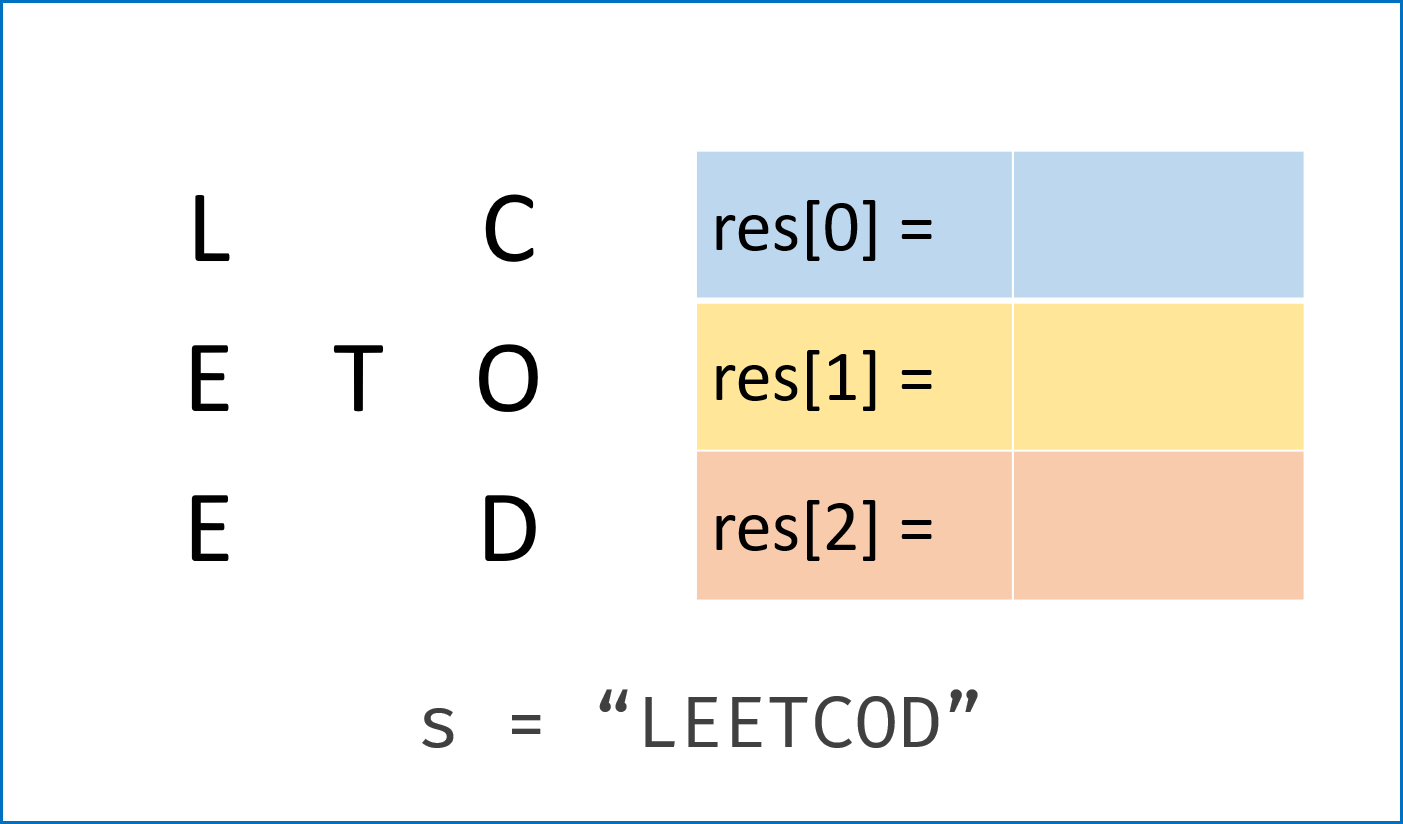 ,
,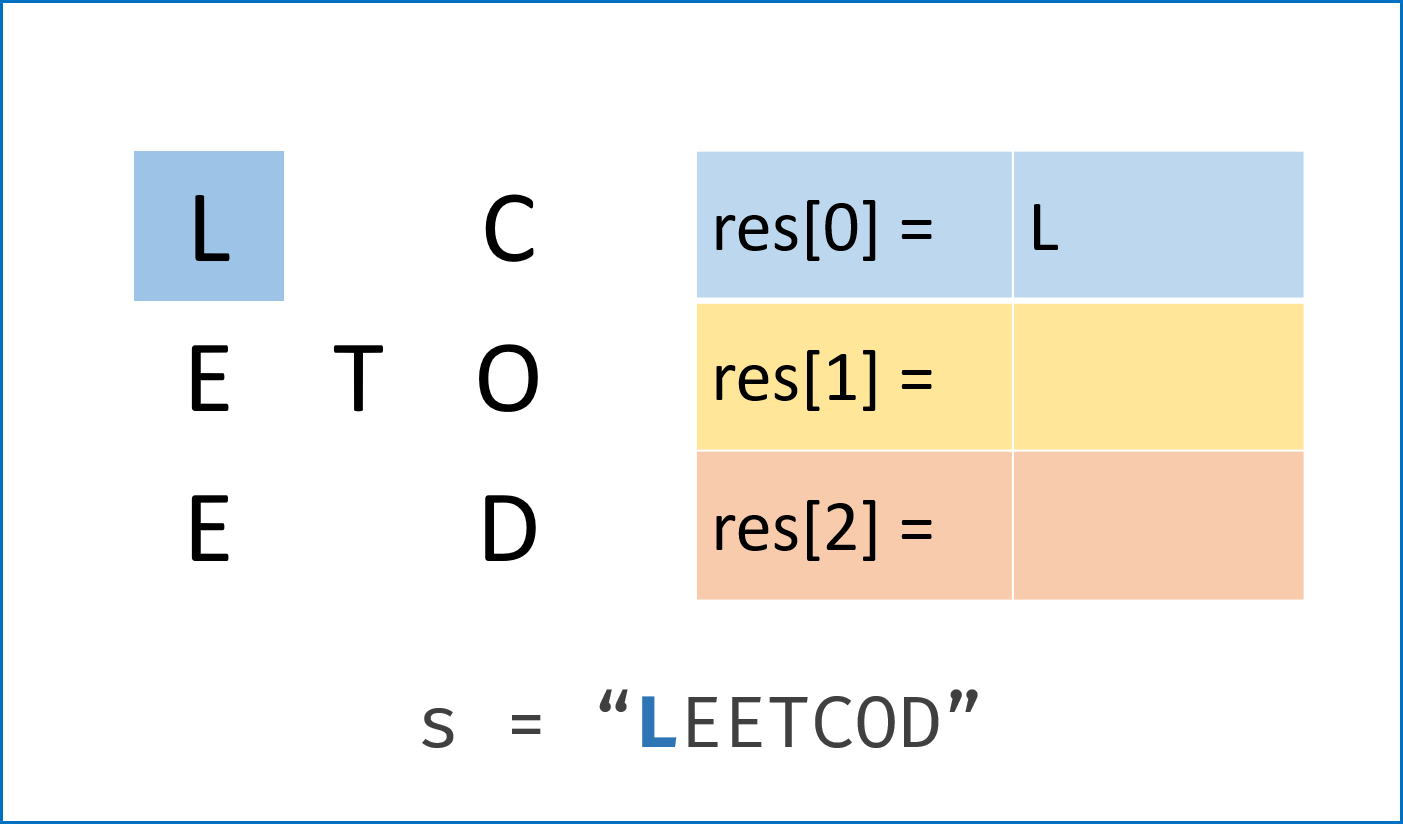 ,
,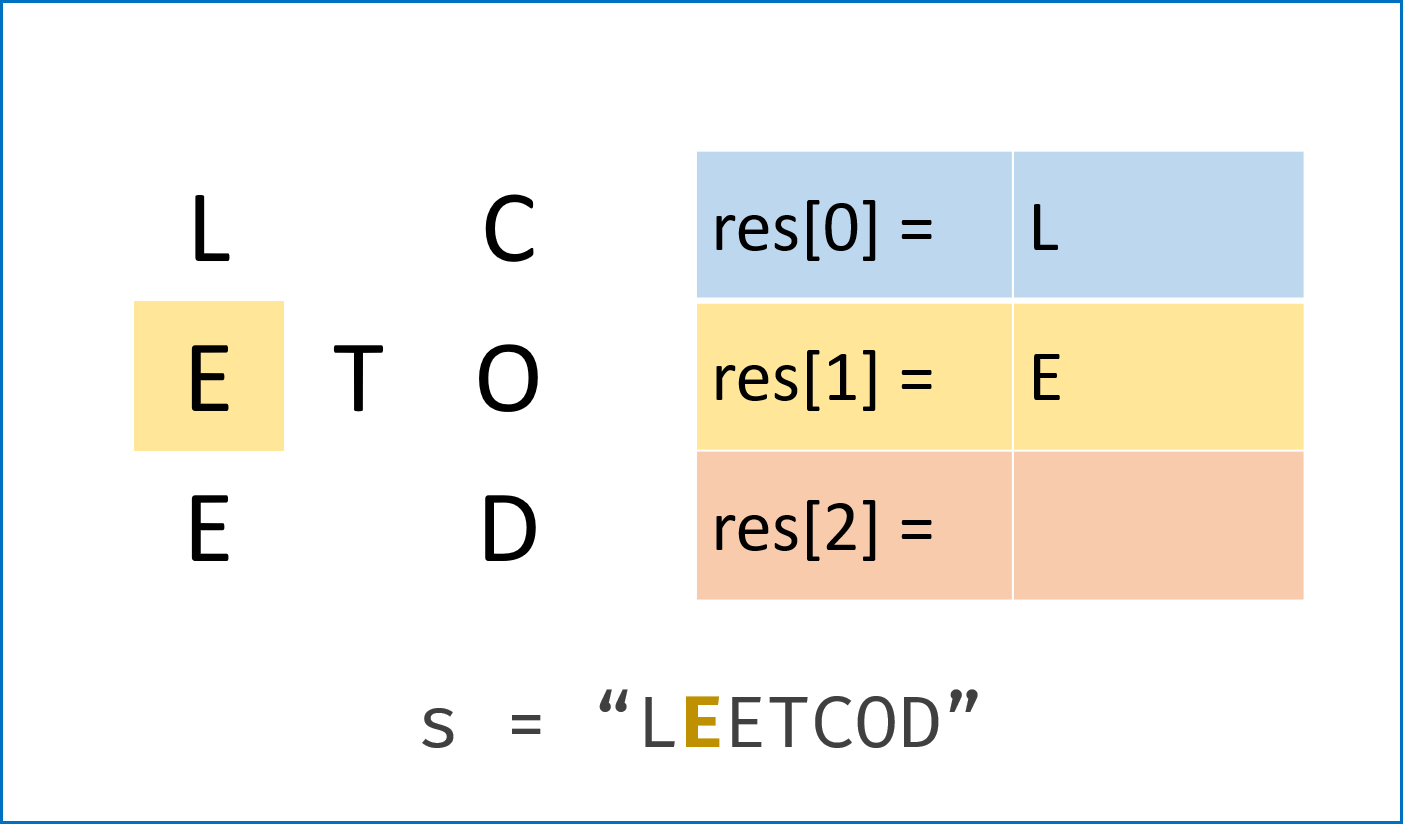 ,
,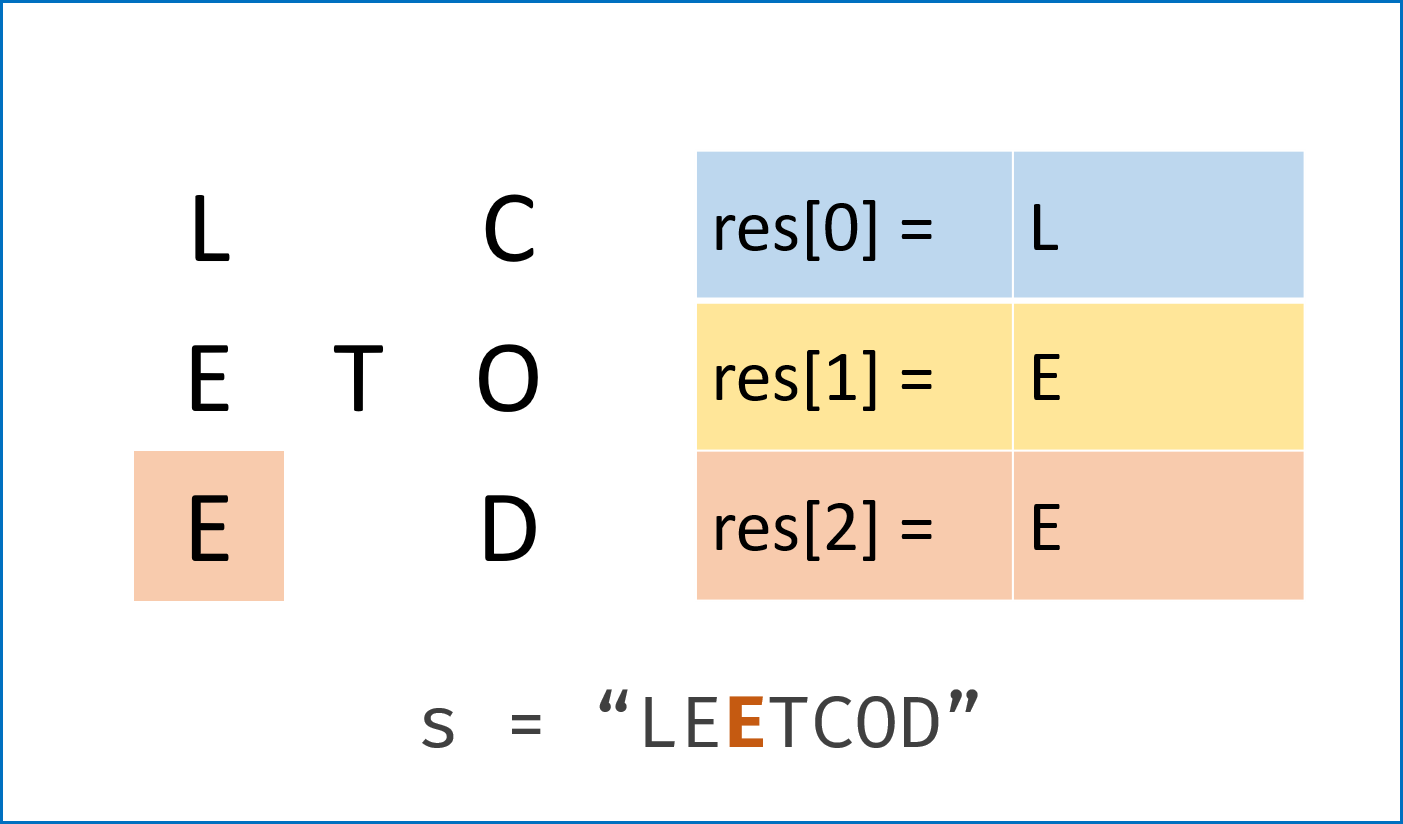 ,
,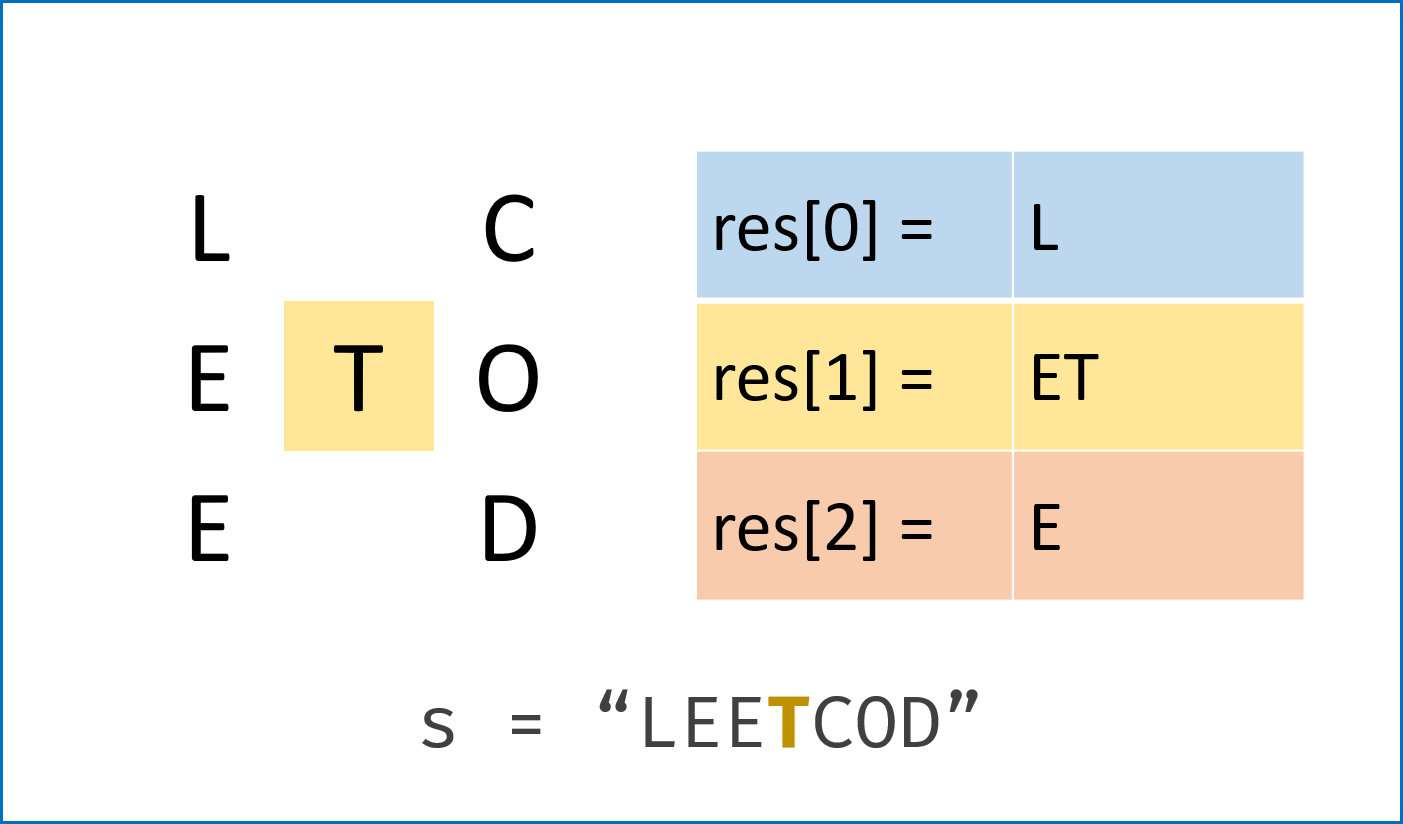 ,
,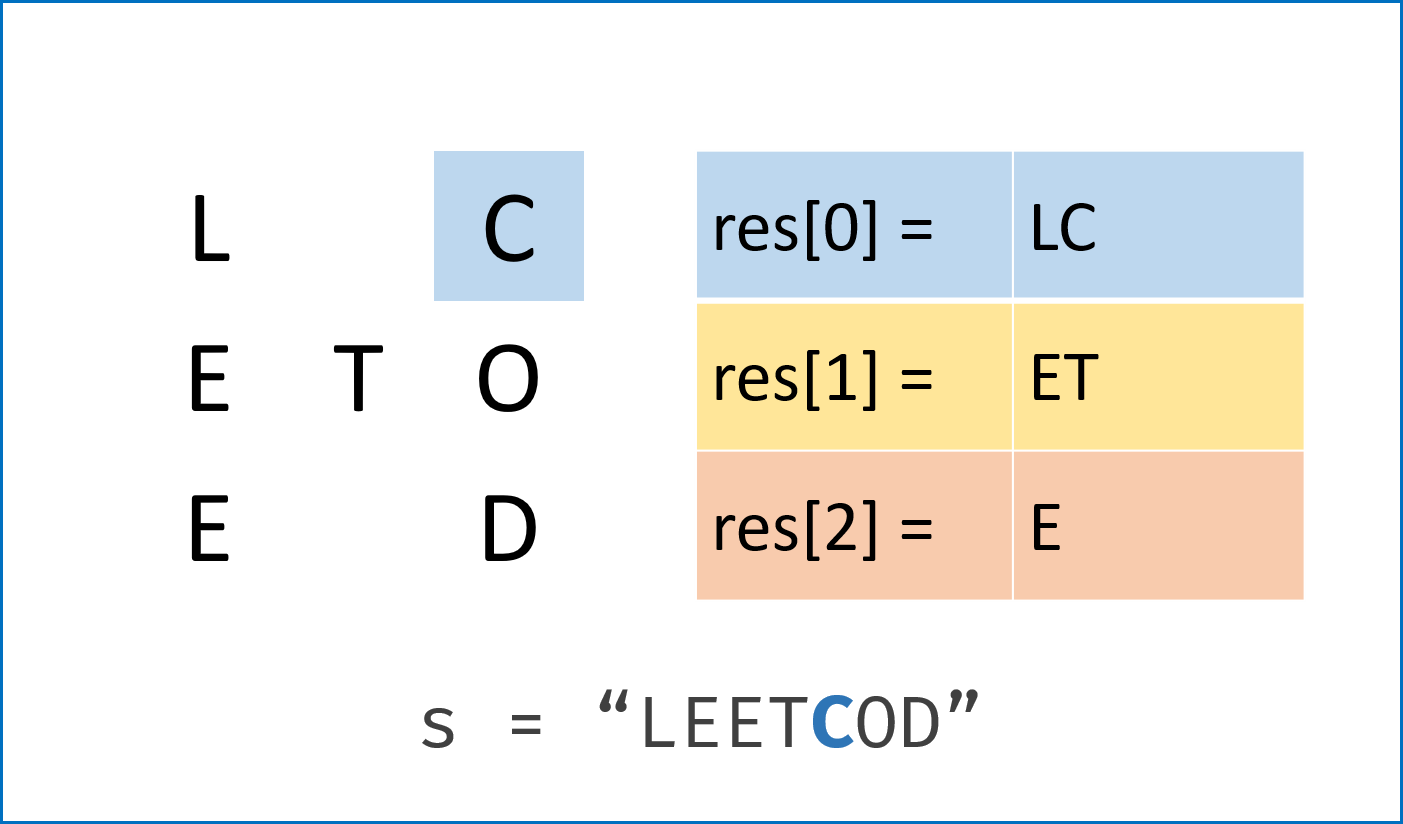 ,
,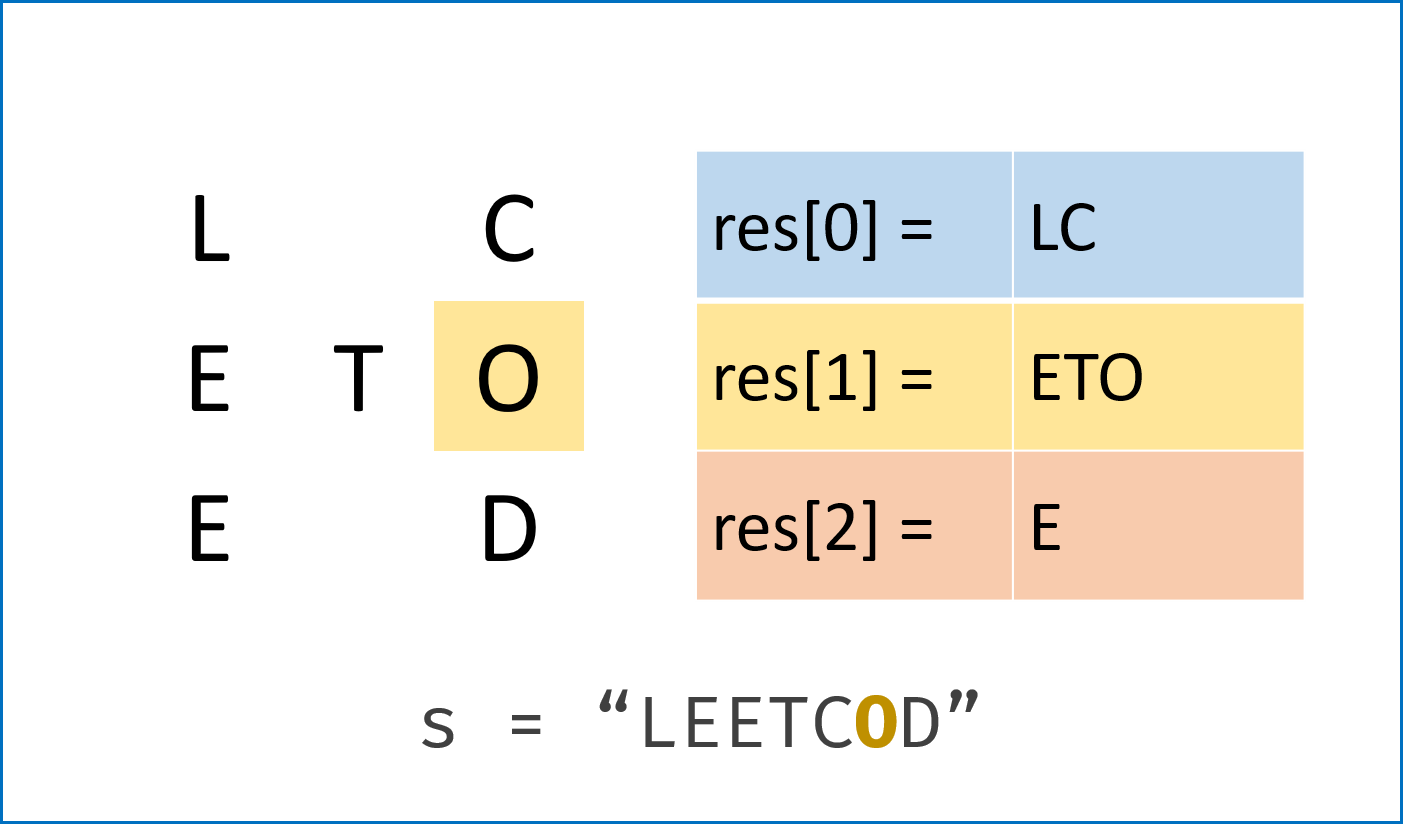 ,
,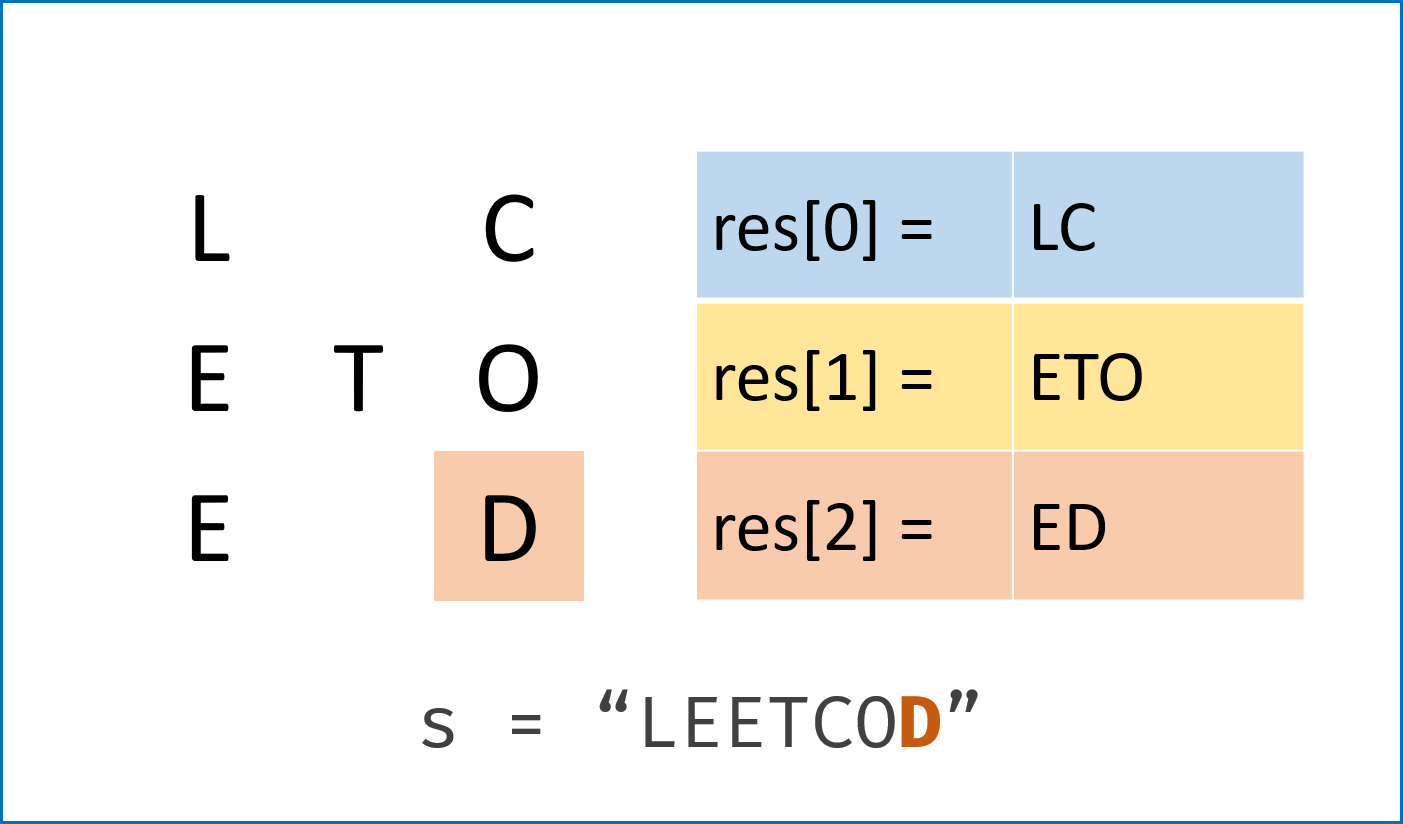 ,
,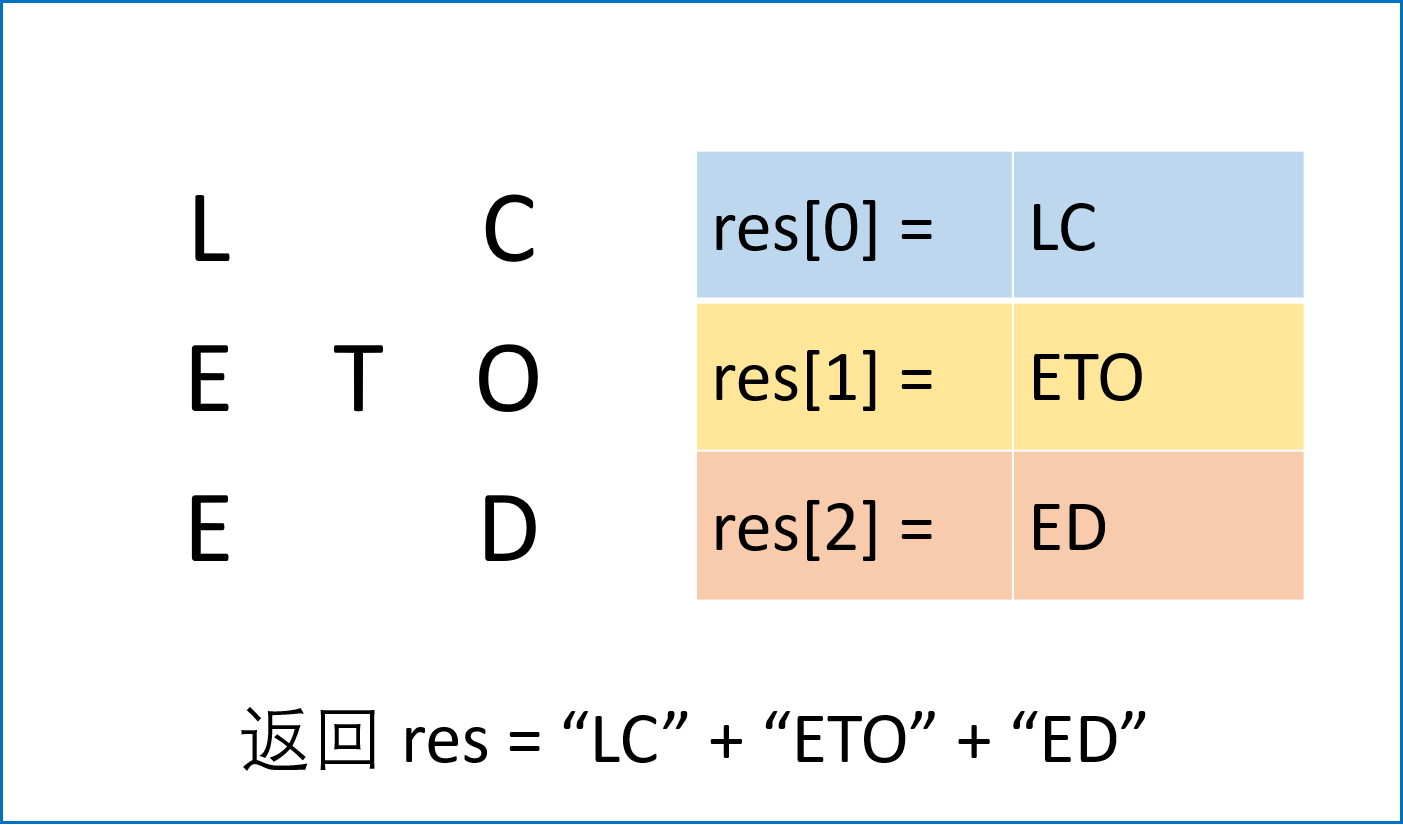 >
>
代码:
Python
class Solution:
def convert(self, s: str, numRows: int) -> str:
if numRows < 2: return s
res = ["" for _ in range(numRows)]
i, flag = 0, -1
for c in s:
res[i] += c
if i == 0 or i == numRows - 1: flag = -flag
i += flag
return "".join(res)Java
class Solution {
public String convert(String s, int numRows) {
if(numRows < 2) return s;
List<StringBuilder> rows = new ArrayList<StringBuilder>();
for(int i = 0; i < numRows; i++) rows.add(new StringBuilder());
int i = 0, flag = -1;
for(char c : s.toCharArray()) {
rows.get(i).append(c);
if(i == 0 || i == numRows -1) flag = - flag;
i += flag;
}
StringBuilder res = new StringBuilder();
for(StringBuilder row : rows) res.append(row);
return res.toString();
}
}C++
class Solution {
public:
string convert(string s, int numRows) {
if (numRows < 2)
return s;
vector<string> rows(numRows);
int i = 0, flag = -1;
for (char c : s) {
rows[i].push_back(c);
if (i == 0 || i == numRows -1)
flag = - flag;
i += flag;
}
string res;
for (const string &row : rows)
res += row;
return res;
}
};复杂度分析:
- 时间复杂度 $O(N)$ :遍历一遍字符串
s; - 空间复杂度 $O(N)$ :各行字符串共占用 $O(N)$ 额外空间。